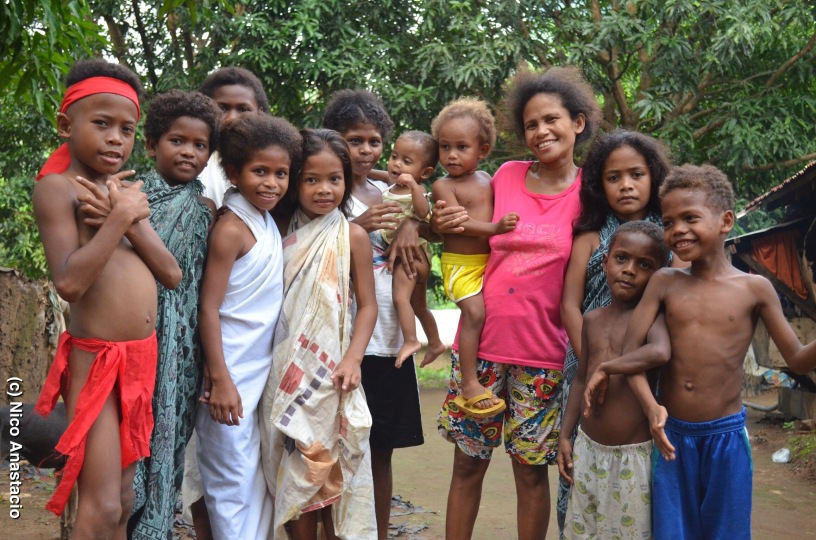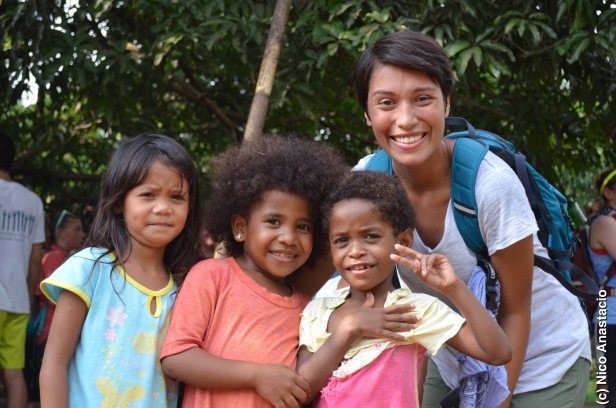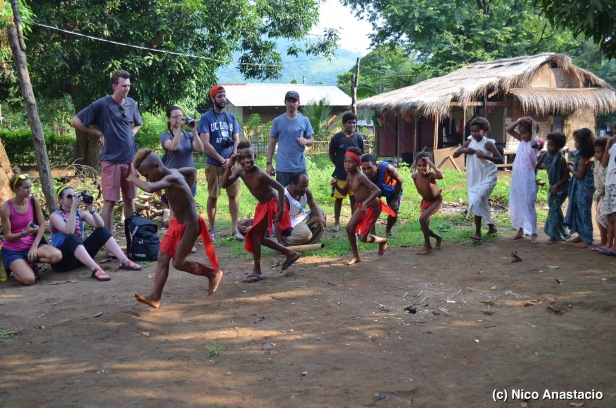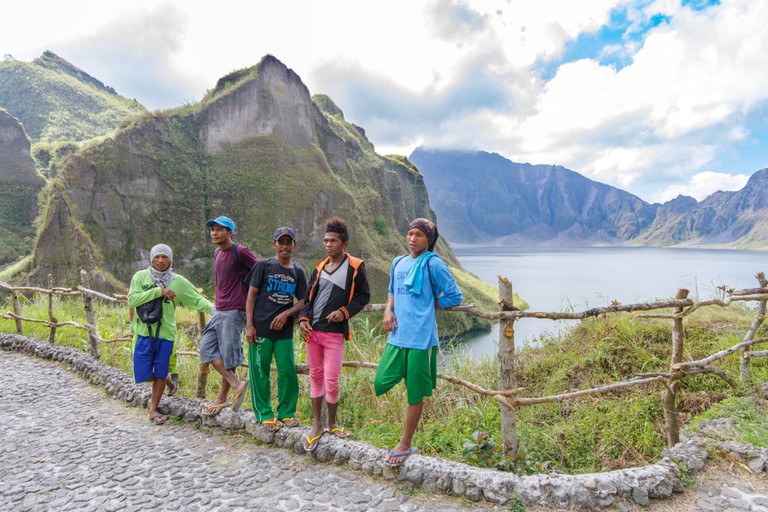Post by Admin on Aug 12, 2021 19:46:43 GMT
Researchers have known from several lines of evidence that the ancient hominins known as the Denisovans interbred with modern humans in the distant past. Now researchers reporting in the journal Current Biology on August 12 have discovered that the Philippine Negrito ethnic group known as the Ayta Magbukon have the highest level of Denisovan ancestry in the world. In fact, they carry considerably more Denisovan DNA than the Papuan Highlanders, who were previously known as the present-day population with the highest level of Denisovan ancestry.

"We made this observation despite the fact that Philippine Negritos were recently admixed with East Asian-related groups—who carry little Denisovan ancestry, and which consequently diluted their levels of Denisovan ancestry," said Maximilian Larena of Uppsala University. "If we account for and masked away the East Asian-related ancestry in Philippine Negritos, their Denisovan ancestry can be up to 46 percent greater than that of Australians and Papuans."
In the new study, Larena and colleagues, including Mattias Jakobsson, aimed to establish the demographic history of the Philippines. Through a partnership between Uppsala University of Sweden and the National Commission for Culture and the Arts of the Philippines (NCCA), aided by collaboration with indigenous cultural communities, local universities, local government units, non-governmental organizations, and/or regional offices of the National Commission for Indigenous Peoples, they analyzed about 2.3 million genotypes from 118 ethnic groups of the Philippines including diverse self-identified Negrito populations. The sample also included high-coverage genomes of AustraloPapuans and Ayta Magbukon Negritos.
The study shows that Ayta Magbukon possess the highest level of Denisovan ancestry in the world, consistent with an independent admixture event into Negritos from Denisovans. Together with the recent discovery of a small-bodied hominin, called Homo luzonensis, the data suggest that there were multiple archaic species that inhabited the Philippines prior to the arrival of modern humans, and that these archaic groups may have been genetically related.

Altogether, the researchers say that the findings unveil a complex intertwined history of modern and archaic humans in the Asia-Pacific region, where distinct Islander Denisovan populations differentially admixed with incoming Australasians across multiple locations and at various points in time.
"This admixture led to variable levels of Denisovan ancestry in the genomes of Philippine Negritos and Papuans," Jakobsson said. "In Island Southeast Asia, Philippine Negritos later admixed with East Asian migrants who possess little Denisovan ancestry, which subsequently diluted their archaic ancestry. Some groups, though, such as the Ayta Magbukon, minimally admixed with the more recent incoming migrants. For this reason, the Ayta Magbukon retained most of their inherited archaic tracts and were left with the highest level of Denisovan ancestry in the world."
"By sequencing more genomes in the future, we will have better resolution in addressing multiple questions, including how the inherited archaic tracts influenced our biology and how it contributed to our adaptation as a species," Larena said.

As part of the cultural exposure of some American volunteers, we went to an Aeta Community in Sitio Kanawan, Barangay Binaritan, Morong Bataan. Aeta, or Agta, is one of the many indigenous groups within the Philippine archipelago. Commonly, they are situated in the north-eastern parts of the country, in the island of Luzon. They are traditionally hunters and gatherers which make them one of the most skilled in terms of jungle survival, not just in the Philippines, but as well as worldwide (Peoples of the World). These jungle survival skills of the Aetas were maximized by the US Military during their war with Vietnam. American soldiers were trained by the Aetas to hone their survival skills in different mountainous and forested areas in a tropical region before they go to Vietnam (Peoples of the World).
This jungle survival skill was something that we also witnessed when we went to the Aeta community in Kanawan. Kuya Billy, one of the members of the tribe, showed us how to set a fire without using any gasoline, match or lighter. He just used bamboo shavings, and pieces of short bamboo poles. After setting the fire, he then showed us how to cook sinigang (a type of Filipino delicacy) and rice inside a bamboo pole, and finally showed us how to eat using improvised plates and utensils made of bamboo. The tribe also showcased a kind of ethnic dance that exhibits the agricultural practices of the tribe.

During our brief stay in the community, I was able to talk with the Sir Rudy Tamundog, the current chieftain of the tribe as of this writing. He has served the head of their community for 7 years already. According to him, he can still stay as the head of their tribe as long as their people still wants him as their leader. In the event that the people don’t want him anymore, a selection process for the next chieftain will be done using grains of corn (maize).
Sir Rudy also mentioned that the Aeta communities within the province of Bataan belong to the Magbukon Tribe. Magbukon, he added, is also the name of their local language. However, due to modernization and their interaction with non-Aetas, this language is not commonly used anymore. Most of them, especially the younger generations, use Tagalog in their daily conversations and transactions.
Marriages with non-Aetas also have an influence not just with the overall appearance of the people in the community, but also to their belief systems, and to their culture in general. Let us just hope that even with these changes in the dynamics of their community, they could still conserve their culture, not just for the whole Aeta community, but for all the Filipinos as well.
Explore further
Modern humans interbred with Denisovans twice in history
More information: Current Biology, Larena et al.: "Philippine Ayta possess the highest level of Denisovan ancestry in the world" www.cell.com/current-biology/f … 0960-9822(21)00977-5 , DOI: 10.1016/j.cub.2021.07.022
Journal information: Current Biology

"We made this observation despite the fact that Philippine Negritos were recently admixed with East Asian-related groups—who carry little Denisovan ancestry, and which consequently diluted their levels of Denisovan ancestry," said Maximilian Larena of Uppsala University. "If we account for and masked away the East Asian-related ancestry in Philippine Negritos, their Denisovan ancestry can be up to 46 percent greater than that of Australians and Papuans."
In the new study, Larena and colleagues, including Mattias Jakobsson, aimed to establish the demographic history of the Philippines. Through a partnership between Uppsala University of Sweden and the National Commission for Culture and the Arts of the Philippines (NCCA), aided by collaboration with indigenous cultural communities, local universities, local government units, non-governmental organizations, and/or regional offices of the National Commission for Indigenous Peoples, they analyzed about 2.3 million genotypes from 118 ethnic groups of the Philippines including diverse self-identified Negrito populations. The sample also included high-coverage genomes of AustraloPapuans and Ayta Magbukon Negritos.
The study shows that Ayta Magbukon possess the highest level of Denisovan ancestry in the world, consistent with an independent admixture event into Negritos from Denisovans. Together with the recent discovery of a small-bodied hominin, called Homo luzonensis, the data suggest that there were multiple archaic species that inhabited the Philippines prior to the arrival of modern humans, and that these archaic groups may have been genetically related.

Altogether, the researchers say that the findings unveil a complex intertwined history of modern and archaic humans in the Asia-Pacific region, where distinct Islander Denisovan populations differentially admixed with incoming Australasians across multiple locations and at various points in time.
"This admixture led to variable levels of Denisovan ancestry in the genomes of Philippine Negritos and Papuans," Jakobsson said. "In Island Southeast Asia, Philippine Negritos later admixed with East Asian migrants who possess little Denisovan ancestry, which subsequently diluted their archaic ancestry. Some groups, though, such as the Ayta Magbukon, minimally admixed with the more recent incoming migrants. For this reason, the Ayta Magbukon retained most of their inherited archaic tracts and were left with the highest level of Denisovan ancestry in the world."
"By sequencing more genomes in the future, we will have better resolution in addressing multiple questions, including how the inherited archaic tracts influenced our biology and how it contributed to our adaptation as a species," Larena said.

As part of the cultural exposure of some American volunteers, we went to an Aeta Community in Sitio Kanawan, Barangay Binaritan, Morong Bataan. Aeta, or Agta, is one of the many indigenous groups within the Philippine archipelago. Commonly, they are situated in the north-eastern parts of the country, in the island of Luzon. They are traditionally hunters and gatherers which make them one of the most skilled in terms of jungle survival, not just in the Philippines, but as well as worldwide (Peoples of the World). These jungle survival skills of the Aetas were maximized by the US Military during their war with Vietnam. American soldiers were trained by the Aetas to hone their survival skills in different mountainous and forested areas in a tropical region before they go to Vietnam (Peoples of the World).
This jungle survival skill was something that we also witnessed when we went to the Aeta community in Kanawan. Kuya Billy, one of the members of the tribe, showed us how to set a fire without using any gasoline, match or lighter. He just used bamboo shavings, and pieces of short bamboo poles. After setting the fire, he then showed us how to cook sinigang (a type of Filipino delicacy) and rice inside a bamboo pole, and finally showed us how to eat using improvised plates and utensils made of bamboo. The tribe also showcased a kind of ethnic dance that exhibits the agricultural practices of the tribe.

During our brief stay in the community, I was able to talk with the Sir Rudy Tamundog, the current chieftain of the tribe as of this writing. He has served the head of their community for 7 years already. According to him, he can still stay as the head of their tribe as long as their people still wants him as their leader. In the event that the people don’t want him anymore, a selection process for the next chieftain will be done using grains of corn (maize).
Sir Rudy also mentioned that the Aeta communities within the province of Bataan belong to the Magbukon Tribe. Magbukon, he added, is also the name of their local language. However, due to modernization and their interaction with non-Aetas, this language is not commonly used anymore. Most of them, especially the younger generations, use Tagalog in their daily conversations and transactions.
Marriages with non-Aetas also have an influence not just with the overall appearance of the people in the community, but also to their belief systems, and to their culture in general. Let us just hope that even with these changes in the dynamics of their community, they could still conserve their culture, not just for the whole Aeta community, but for all the Filipinos as well.
Explore further
Modern humans interbred with Denisovans twice in history
More information: Current Biology, Larena et al.: "Philippine Ayta possess the highest level of Denisovan ancestry in the world" www.cell.com/current-biology/f … 0960-9822(21)00977-5 , DOI: 10.1016/j.cub.2021.07.022
Journal information: Current Biology





